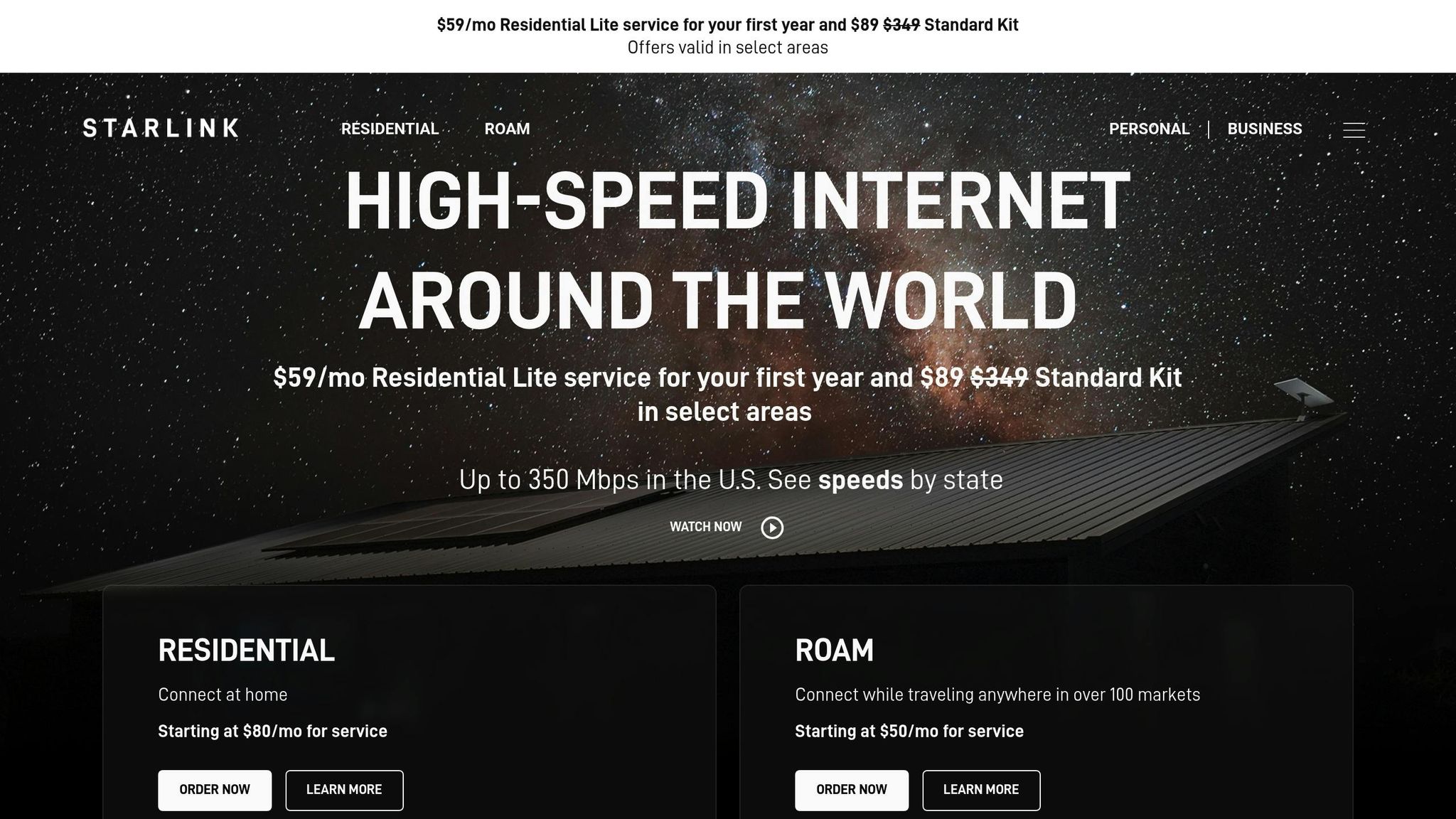Starlink, under Elon Musk's leadership, has chosen to remain private instead of going public. This decision allows the company to focus on long-term goals, like expanding its satellite network and funding ambitious projects, without the short-term pressures of public markets. By leveraging private equity principles, Starlink benefits from:
- Control and Flexibility: Quick decision-making without shareholder interference.
- Privacy: No mandatory financial disclosures, protecting strategic plans.
- Patient Capital: Investors committed to long-term growth.
- Efficient Funding: Raising money privately while avoiding IPO challenges.
Starlink's subscription-based revenue model and cost-efficient operations, including in-house satellite production and reusable rockets, further strengthen its ability to scale. This approach offers lessons for SaaS and AI companies, emphasizing steady revenue, disciplined management, and thoughtful exit planning over rapid growth or public market pressures.
Episode 191: Private Equity Playbook: Strategies to Accelerate Growth and Exit Profitably
How Starlink Uses Private Equity Methods

Starlink's approach to growth reflects strategies often seen in private equity, allowing the company to expand efficiently while keeping the flexibility necessary for long-term goals. Guided by Elon Musk's vision, these methods play a key role in shaping Starlink's operational and financial practices.
Raising Money Through Private Funding
Starlink taps into SpaceX's strong reputation to attract private investors. This approach lets the company avoid the unpredictability of public markets and the constant pressure of quarterly earnings. By securing funds privately, Starlink can time its capital raises strategically and benefit from investors who understand the complexities of large-scale projects like deploying satellites.
Keeping Control and Flexibility
Staying private allows Starlink's leadership to maintain firm control over the company's direction. Without the constraints of public market oversight, management can act quickly to address new challenges or seize opportunities. This freedom also supports innovation, enabling the company to experiment with new services and adapt its market strategies as needed.
Building Steady Revenue Streams
Starlink's subscription-based model provides a reliable and recurring source of income. This predictable cash flow supports long-term financial planning and strengthens the company’s foundation for future expansion.
Getting Cash Without Going Public
Starlink employs alternatives like secondary transactions and debt financing to provide liquidity for early investors and employees. These methods offer returns without the complications of an IPO, allowing the company to stay focused on its long-term objectives while rewarding its supporters.
Private vs Public Funding Comparison
The benefits of private funding stand out when compared to public funding:
- Control: Founders and early investors retain more control over decision-making.
- Disclosure Requirements: Fewer regulatory obligations mean more operational privacy.
- Valuation Stability: Valuations are steadier, driven by long-term goals rather than daily market swings.
- Capital Access and Timing: Private funding provides patient capital that aligns with the company's extended growth timeline.
Business Decisions That Support Private Growth
Starlink's approach to staying private is shaped by deliberate strategies that emphasize self-reliance, steady growth, and operational independence.
Cost Control and Efficiency
Starlink keeps costs in check by handling much of its satellite manufacturing in-house. This vertical integration allows for faster design updates and helps streamline production. By using SpaceX's Falcon 9 rockets with reusable launch technology, Starlink significantly cuts down on deployment expenses, compared to relying on external launch providers. This cost-conscious mindset extends to its ground equipment, where ongoing improvements to user terminals aim to boost performance while driving down costs.
Growing Subscription Revenue
The backbone of Starlink's revenue strategy is its subscription model, which provides a steady and predictable cash flow. Instead of chasing rapid user growth through heavy discounts, the company focuses on maximizing customer lifetime value. This pricing discipline helps ensure better unit economics and stronger cash generation per customer. By targeting regions with limited connectivity options, Starlink can maintain premium pricing and foster long-term customer loyalty.
Avoiding Market Ups and Downs
Remaining private shields Starlink from the market volatility and short-term pressures that public companies often face. Without the need to meet quarterly earnings expectations, the company can focus on long-term investments, such as expanding its satellite network and upgrading ground infrastructure. These capital-intensive projects are designed to yield benefits over time, rather than catering to immediate shareholder demands.
Targeting Different Customer Types
Starlink's diverse customer base reduces its dependence on any single revenue stream. The company caters to residential users, businesses, government agencies, and specialized markets like maritime and aviation. These sectors often involve high-value, long-term contracts, helping to stabilize revenue and protect against market fluctuations. This diversified approach offers practical insights for companies in industries like SaaS and AI, where balancing varied customer needs is equally crucial.
sbb-itb-9cd970b
What SaaS and AI Companies Can Learn
Starlink's private equity strategy offers valuable lessons for SaaS and AI companies aiming to achieve sustainable growth while maintaining control. By following Starlink's approach, tech businesses can navigate market fluctuations and focus on building scalable, long-term success. Here's how SaaS and AI companies can apply these principles.
Build Steady Revenue Before Rapid Expansion
For SaaS and AI companies, establishing a stable base of recurring revenue should take precedence over aggressive growth. Like Starlink, the focus should be on maximizing customer lifetime value (CLV) instead of chasing discounted user acquisition.
This means keeping customer acquisition costs (CAC) significantly lower than CLV, ensuring strong retention rates, and maintaining consistent metrics like monthly recurring revenue (MRR) and annual recurring revenue (ARR) while minimizing churn.
Companies that scale too quickly without solid revenue foundations risk faltering when market conditions tighten or investor sentiment changes. A disciplined approach to growth lays the groundwork for long-term success.
Adopt a Private Equity Management Style
Private equity management prioritizes operational discipline and performance-driven decision-making. SaaS and AI companies can adopt similar practices by establishing rigorous financial controls, setting clear performance benchmarks, and maintaining lean operations.
Key actions include:
- Conducting regular performance reviews with well-defined KPIs.
- Aligning metrics with long-term goals, such as CAC payback periods, gross revenue retention, and product development milestones.
- Avoiding the pressure of quarterly earnings by focusing on sustainable, scalable growth.
This disciplined management style not only supports long-term stability but also makes the business more appealing to private investors.
Develop Scalable Models to Attract Private Investors
Private investors are drawn to businesses with high gross margins and scalable revenue models. SaaS companies naturally excel here, as software can accommodate additional users without proportionally increasing costs. Similarly, AI businesses can scale by creating platforms that improve with usage and data accumulation.
To attract private investment, companies should:
- Combine recurring revenue streams with opportunities for upselling, such as tiered pricing, add-ons, or usage-based models.
- Build competitive advantages through proprietary technologies, network effects, or exclusive data assets.
These elements not only enhance scalability but also make the business more attractive to investors who are focused on long-term value creation.
Leverage Tools to Drive Growth and Efficiency
Specialized tools can play a crucial role in helping SaaS and AI companies scale effectively while keeping costs under control. For example:
- Customer relationship management (CRM) systems: Provide insights into customer lifetime value, churn rates, and growth opportunities, enabling data-driven decision-making.
- Analytics and business intelligence platforms: Offer detailed financial reporting to monitor unit economics, forecast cash flows, and identify inefficiencies that could impact profitability.
- Revenue operations tools: Optimize the customer journey from acquisition to renewal, ensuring a seamless experience.
- Lead generation tools: Maintain a steady pipeline of new customers, avoiding the ups and downs that can destabilize growth.
The key is to choose tools that deliver measurable results and integrate smoothly with existing workflows, ensuring they contribute to long-term growth and operational efficiency.
Planning Future Growth and Exit Options
As Starlink continues to operate as a private company, having well-thought-out exit strategies is crucial. These strategies help translate long-term growth into meaningful value for founders, employees, and investors.
Exit Options for Private Companies
Private companies have several ways to provide liquidity, each suited to different stages of business maturity and market conditions. One of the most common routes is an initial public offering (IPO). While going public offers liquidity and wider access to capital, it also brings new challenges, like increased regulatory oversight and market pressures.
Another option is a strategic acquisition by a larger corporation. This can provide immediate liquidity and potential operational benefits. For instance, tech companies are often acquired by industry giants seeking to integrate cutting-edge capabilities into their platforms. However, this route can sometimes result in changes to company culture or a shift in strategic priorities.
Other alternatives include tracking stocks, which allow companies to enter public markets while retaining some control, or partial spin-offs, where parts of the business are sold but the core remains under the original ownership. A secondary buyout is another option, where the company is sold to a different private equity firm. This approach extends private ownership while providing liquidity to existing investors.
Each of these options requires careful consideration of timing and strategy, something Elon Musk has consistently demonstrated.
When to Exit: Learning from Musk
Elon Musk’s approach to deciding when to exit highlights the importance of focusing on a company’s fundamentals instead of trying to perfectly time the market. Rather than rushing into public markets during favorable conditions, Musk has shown a preference for waiting until his companies achieve strong profitability and operational stability.
Take Tesla, for example. The company didn’t go public until it had proven its market fit and established solid manufacturing capabilities. Even after going public, Tesla faced the typical challenges of operating in public markets, but its foundation allowed it to navigate them effectively.
For Starlink, remaining private seems to be a deliberate choice. Despite its impressive growth and global reach, the company is focusing on achieving sustainable unit economics and improving operational efficiency. This strategy allows Starlink to prioritize long-term value creation over short-term market pressures - an approach that offers valuable lessons for other industries.
Exit Planning for SaaS and AI Companies
For SaaS and AI companies, early and thoughtful exit planning is critical to maximizing value while maintaining operational control. A strong financial foundation is key, built on healthy margins, steady revenue growth, and efficient customer acquisition. At the same time, developing a competitive edge - such as proprietary technologies or exclusive data - can significantly boost valuations.
Operational readiness is equally important. Companies should focus on building reliable financial reporting systems, assembling experienced leadership teams, and ensuring their operations can scale effectively. Timing is another crucial factor. Leaders must consider both internal milestones, like achieving profitability, and external factors, such as market trends and investor sentiment. A well-timed exit can make a significant difference in the outcome, ensuring the company is positioned for long-term success.
Conclusion: Key Points for SaaS and AI Leaders
Starlink's private equity strategy provides a roadmap for sustainable growth that SaaS and AI leaders can apply to their own businesses. The focus should be on building long-term value rather than chasing short-term wins - a mindset that has been central to Starlink's operational success.
Predictable revenue and operational control are the cornerstones of growth. SaaS and AI companies should aim to establish recurring revenue models that provide financial stability. This steady income stream supports strategic decision-making and allows leaders to focus on scaling their businesses effectively. Operational control, on the other hand, ensures that decisions are guided by the company's core fundamentals rather than external market pressures. This control gives leaders the flexibility to adapt, invest in innovation, and build the infrastructure needed for sustainable growth.
Another critical aspect is the timing of exit strategies. Companies should plan their exits after achieving solid unit economics and operational maturity, rather than relying solely on favorable market conditions. This approach gives leaders more options when it's time to provide liquidity for investors and employees.
Businesses that demonstrate efficient customer acquisition costs, strong retention rates, and growing market opportunities will be better positioned - whether they choose to stay private or eventually go public.
The private equity model highlights the importance of patient investment combined with strategic growth. SaaS and AI leaders who prioritize these principles can create enduring value while staying agile in the face of market complexities.
FAQs
Why has Starlink chosen to stay private, and what are the main benefits of this decision?
Starlink has chosen to remain a private company to keep control over its strategic goals, sidestep the short-term demands of public markets, and concentrate on long-term growth. Operating privately gives the company the ability to make quicker decisions, respond to challenges more efficiently, and channel profits directly into advancing technology and expanding its global presence.
This decision also frees Starlink from the pressures of shareholder expectations and market volatility, allowing it to stay focused on its mission. By doing so, the company can continue scaling its operations and driving progress in technology and infrastructure development.
How does Starlink's subscription model support its long-term growth and stability?
Starlink's subscription model is central to its financial health and long-term growth. Generating around $6.5 billion annually in recurring revenue as of early 2025, this approach provides the company with a dependable and steady cash flow.
This reliable income enables Starlink to cover essential operations, invest in infrastructure improvements, and pursue advancements in technology - all without leaning too heavily on hardware sales or being overly impacted by market fluctuations. By emphasizing subscription revenue, Starlink positions itself to maintain steady growth and expand its services worldwide.
What can SaaS and AI companies learn from Starlink’s private equity strategy and focus on sustainable growth?
Starlink serves as a prime example of how staying private allows companies to focus on long-term growth without being swayed by the pressures of public markets. By reinvesting profits, carefully managing growth, and keeping operations flexible, private companies can create a solid base for sustained success.
For SaaS and AI businesses, Starlink’s approach highlights the benefits of prioritizing predictable revenue streams and using capital efficiently. These strategies support stronger strategic planning, encourage innovation, and make scaling operations smoother - all while sidestepping the ups and downs often seen in public markets. Adopting these methods can help businesses tackle challenges effectively and grow steadily over time.



